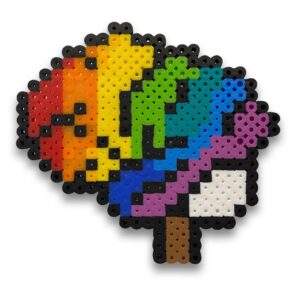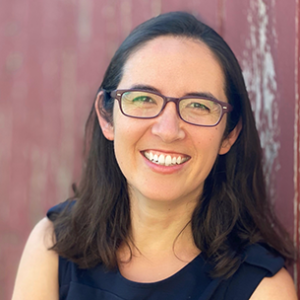Meet our Investigators: Carol Lee Wilkinson, MD, PhD
How long have you been a member of the IDDRC? Which organization and department do you work for?
I just recently joined the IDDRC last fall! I came to Boston Children’s in 2014 as a Developmental Behavioral Pediatrics fellow, and then continued as a T32 fellow and this summer started my lab within the Labs of Cognitive Neuroscience in the Division of Developmental Medicine.
What is your main research focus?
Our lab is interested in understanding the neural mechanisms impairing language acquisition and cognitive development in children – especially those with disorders associated with intellectual disability. We study this in two ways, both using EEG to measure brain activity. First, we study longitudinal changes in brain activity starting infancy. We know surprisingly little about how brain activity matures during the first years of life, and how these changes relate to language and cognitive development. In these prospective studies we aim to identify both brain-based and non-biological factors that affect development. Second, we study brain activity in young children with genetic disorders associated with intellectual disability and autism – including Down syndrome and Fragile X Syndrome. Here we aim to identify brain-based biomarkers of language and cognitive development that could be used in clinical trials. In addition, by comparing similarities and differences in brain activity between Down syndrome, Fragile X Syndrome, and children with autism, we begin to tease apart neurobiological pathways affecting specific cognitive, language, or behavioral challenges within and across disorders.
What led you to pursue research career and/or interest in IDD?
I have always been interested in how children learn, and my research and clinical training provided me the opportunity to think about this question from the synaptic level to the service/therapy level. As an undergrad, I worked closely with a preschooler with autism. He had very limited language and despite receiving a lot of excellent support, he made little progress. At the same time, one day he spontaneous said a full sentence – “I want pizza!”. This dichotomy – how a child can have the ability to speak, but not functionally use this ability – spurred my initial research interests in autism and continues to guide much of my research interests.
In graduate school I studied molecular mechanisms of synaptic plasticity (lots of imaging of hippocampal neurons – now framed on my office wall!) and continue to be fascinated by the complex and tightly regulated molecular response that facilitates synaptic and network plasticity. As a developmental pediatrician, I have the privilege of working with families and their children to find the right supports to help them make maximal progress. This is often hardest for my patients with IDD where therapies often lead to only small incremental gains. There is still so little we know and huge gaps in linking our molecular understanding of synaptic proteins implicated in IDD to clinical therapies for individuals. By understanding network level differences in children with IDD and linking this to our molecular understanding of the genes involved, our lab hopes to bridge those gaps.
Any comments on the services of a core/or particular equipment that advances your current research?
The Human Neurobehavioral Core has been a great resource for our lab, both for training our lab members on behavioral assessment, deciding which behavioral assessments to use, as well as performing those assessments for certain studies. I am also very excited to take advantage of data management and integrative support through the new TNC Data Organization Collaborative Service run by IDDRC member Alex Cohen.
Are you interested in collaborating or offering any collaborative opportunities? If yes explain briefly.
Yes yes yes! Many of our EEG projects are collaborative and combine data collected across various studies from labs in the IDDRC. In addition, I would love to collaborate and brain storm with labs studying animal models of IDD. I am passionate about helping non-clinician scientists learn about autism and other neurodevelopmental disorders. As co-chair of the Autism Spectrum Center Research Committee (with April Levin – another IDDRC member), we are hoping to provide more opportunities for basic scientists to interact with clinicians and learn about the patient populations their are studying.
Something fun/personal: Interesting tidbit about you: favorite place to travel, pet, hobby, talent, funny story
During a February school vacation week last year during COVID, I introduced my son to Perler Beads, hoping that it might keep him busy for at least a few hours while I worked. Turns out I also got hooked and ended up making many brain or lab inspired creations. I’ve put them all to good use on our lab webpage!



